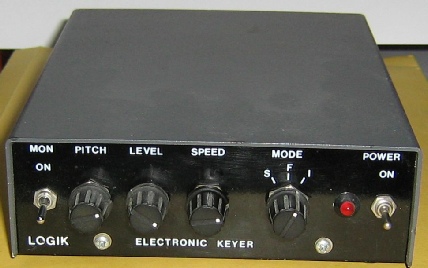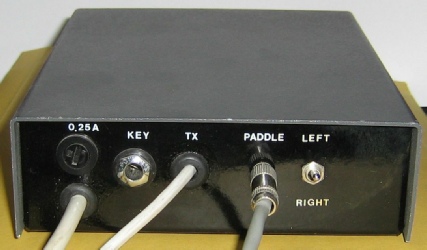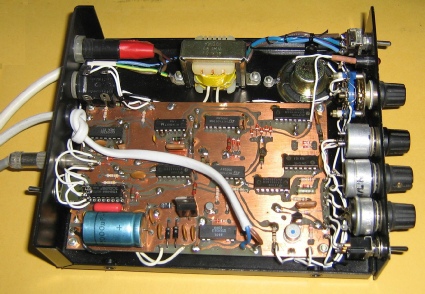Keyer
This keyer was developed in 1991 following problems in using commercial electronic keyers after many years of using mechanical bug keys including a J36 and a Vibroplex “Original” which I still have. Analysis of the problem showed that the commercial keyers were sampling if the paddles were still pressed much too early in the keying cycle compared to the mechanical bug keys. It was decided to develop a CMOS keyer that sampled the paddles much later in the keying cycle and this has proved to be satisfactory and is still in use today. The following photos show the general construction.

An internal monitor and loudspeaker is provided which can be switched on or off and the volume and pitch set as required. Speed can be varied from about 5 -
Modes provided are:
S -
F -
I -

The keyer is only mains powered but could use an internal battery if required as the power consumption is very small.
Rear panel functions include a switch for left or right handed operation, a socket for an external key -
My paddles are by Bencher.

The printed circuit board is double sided with the majority of the top side being a ground plane and it holds all of the components except controls, mains transformer and loudspeaker. Both sides are covered in a thin coat of polyurethane varnish.
The output device is a reed relay which has proven satisfactory with a wide range of transceivers but does have limited current and voltage switching capabilities. Nine standard 4000 series CMOS ICs and a handfull of silicon diodes are used to implement the hard wired logic.